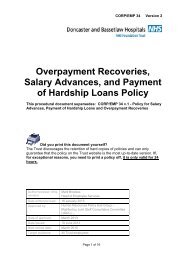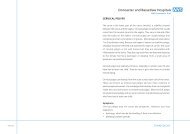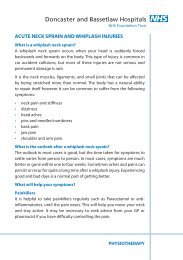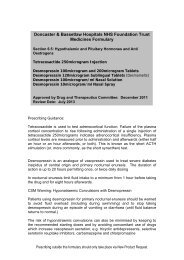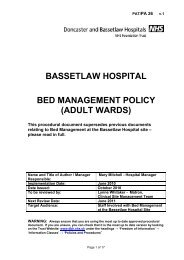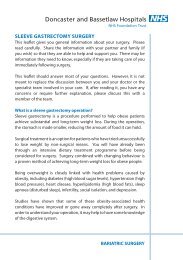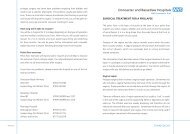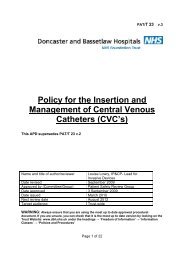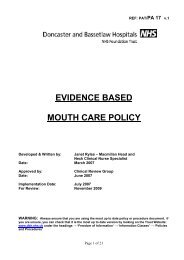VARIANT CREUTZFELDT-JAKOB DISEASE (vCJD) AND ...
VARIANT CREUTZFELDT-JAKOB DISEASE (vCJD) AND ...
VARIANT CREUTZFELDT-JAKOB DISEASE (vCJD) AND ...
Create successful ePaper yourself
Turn your PDF publications into a flip-book with our unique Google optimized e-Paper software.
PAT/IC 4 v.3<br />
Table 2. CJD Risk Questions for patients undergoing elective or emergency<br />
surgical or neuro-endoscopic procedures likely to involve contact with<br />
tissues of potentially high level infectivity<br />
From “Transmissible spongiform encephalopathy agents : Safe working and the prevention of infection”<br />
Annex J.<br />
Question to Patient<br />
1 Have you a history of CJD or<br />
other prion disease in your<br />
family? If yes, please specify.<br />
2 Have you ever received<br />
growth hormone or<br />
gonadotrophin treatment?<br />
If yes, please specify:<br />
i) whether the hormone was<br />
derived from human pituitary<br />
glands<br />
ii) the year of treatment<br />
iii) whether the treatment<br />
was received in the UK or in<br />
another country<br />
3 Have you had surgery on<br />
your brain or spinal cord?<br />
Notes to Clinician<br />
Patients should be considered to be at risk from genetic<br />
forms of CJD if they have or have had:<br />
i) Genetic testing, which has indicated that they are at<br />
significant risk of developing CJD or other prion disease<br />
ii) A blood relative known to have a genetic mutation<br />
indicative of genetic JD or other prion disease<br />
iii) Two or more blood relatives affected by CJD or other<br />
prion disease<br />
Recipients of hormone derived from human pituitary<br />
glands eg growth hormone or gonadotrophin, have been<br />
identified as at increased risk of sporadic CJD.<br />
In the UK the use of human-derived growth hormone was<br />
discontinued in 1985 but human-derived products may<br />
have continued to be used in other countries.<br />
In the UK, the use of human-derived gonadotrophin was<br />
discontinued in 1973 but may have continued in other<br />
countries after this time.<br />
a) Patients who underwent intradural neurosurgical or<br />
spinal procedures before August 1992 may have<br />
received a graft of human-derived dura mater, and<br />
should be treated as at increased risk, unless evidence<br />
can be provided that human-derived dura mater was not<br />
used. Patients who received a graft of human-derived<br />
dura mater before 1992 are at increased risk of sporadic<br />
CJD but not <strong>vCJD</strong>.<br />
b) NICE guidance emphasises the need for a separate<br />
pool of new neuroendoscopes and reusable surgical<br />
instruments for high risk procedures on children born<br />
since 1st January 1997 and who have not previously<br />
undergone high risk procedures. These instruments and<br />
neuroendoscopes should not be used for patients born<br />
before 1st January 1997 or those who underwent high<br />
risk procedures using reusable instruments before<br />
implementation of this guidance<br />
Page 11 of 22



